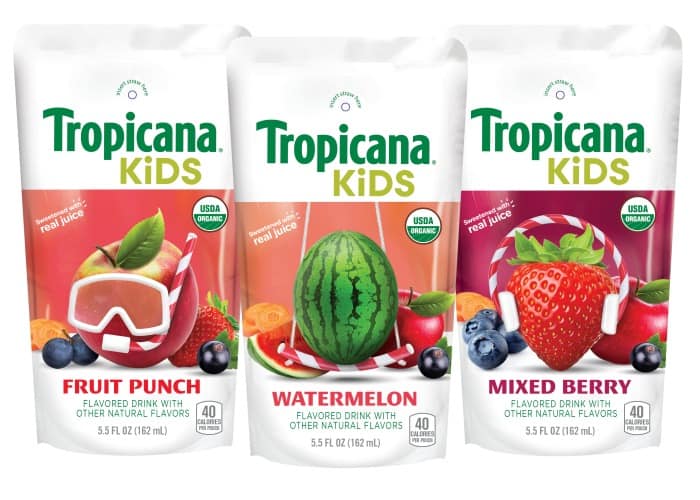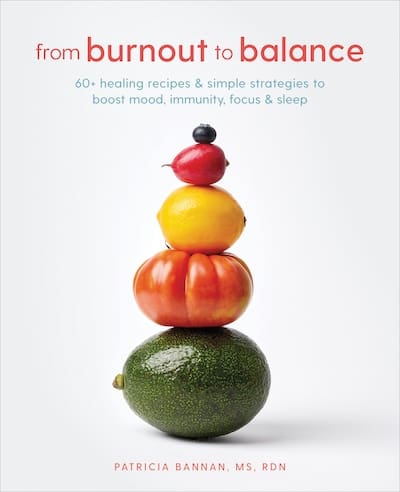I’m delighted to have partnered with Tropicana on this blog post. All opinions are my own.
While back-to-school season is an exciting time for both parents and kids, it can also be stressful for everyone due to new classes and busy schedules. But with new routines come new opportunities to create healthy habits that save you time and energy. Here are my top tips to help you “thrive on” this back-to-school season.
1. Make breakfast a breeze.
It’s always important to start the day off right with good nutrition, but school mornings can be hectic to say the least. Having pre-made or no-prep breakfast foods on hand, like hard boiled eggs, Greek yogurt, or overnight oats are all great options. For a fun and nutritious breakfast or lunchbox recipe, try my Orange Cream Pie Chia Pudding made with Tropicana Pure Premium orange juice. Not only can the pudding be made the night before and packs in 8 grams of protein and 9 grams of fiber for staying energized.
2. Create an enjoyable homework space.
Homework goes more smoothly when everyone is happy, so help get your kids excited about their assignments by creating a unique and quiet space just for them. To help achieve this, let them design a name plate for their desk or hang inspired drawings on the wall. Your child will be more motivated to sit down and work in a space that truly feels like theirs.
3. Choose smart beverages.
For convenience, portability and taste, I’m a big fan of the new Tropicana Kids juice drink pouches because they are made with real fruit juice mixed with filtered water! Featuring a clear panel so that moms and dads can see the goodness inside, these drinks are certified USDA Organic, contain no added sugar, and are an excellent source of vitamin C, which make them the perfect back-to-school drink that you and your kids can feel good about.

4. Reduce screen time.
Kids spend most of their waking hours sitting in the classroom, so when they arrive home, encourage them to step away from the TV, computer, and video games, and instead engage in alternative activities or family time. The American Academy of Pediatrics recommends elementary school children limit screen time to no more than one hour a day, and no more than two hours a day as they get older. Develop a family media plan that considers the health, education, and entertainment needs of each child as well as the whole family
5. Pack a healthy snack.
Packing snacks for kids is the perfect opportunity to include at least one fruit and veggie. Fresh fruit (sliced apples, pears, bananas), baby carrots, cherry tomatoes, bell pepper slices are portable ways to get good nutrition into your little ones. For a snack with more staying power, try coupling produce with some Greek yogurt, hummus, steamed edamame, cheese, roasted chickpeas, or nuts (if a school allows) for added protein.
6. Get moving.
Encourage your child to participate in physical activities they like, are age-appropriate, and offer variety! According to the Physical Activity Guidelines for Americans, children and adolescents should do one hour or more of physical activity each day. Set a positive example by leading an active lifestyle yourself, and plan family activities that are fun, like nature walks, bike rides, or water games
7. Plan downtime.
While extracurricular activities are a great way for children to exercise their minds, bodies, and social skills, making sure they get enough downtime is just as vital. Plan downtime in direct correlation to other activities to ensure proper rest and rejuvenation, which helps parents get some downtime, too
8. Keep a regular sleep schedule.
Sleep deprivation isn’t just a problem for adults. It affects children, too, and can lead to decreased learning performance, poor social interactions, irritability and crankiness, depression, and even injuries. Try to keep your kids on a regular sleep schedule by sticking to a regular bedtime, turning off electronics, and reserving the bed for only sleeping. Not sure how much sleep is ideal? Check out the American Academy of Pediatrics Childhood Sleep Guidelines to make sure your little ones are getting the zzzzs they need.






